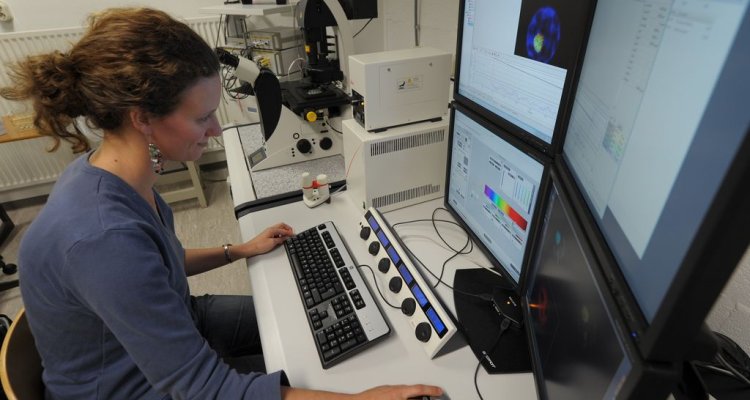
Project
Redox-dependent assembly of CRK complexes
Cysteine-Rich Receptor Kinases (CRKs), a family of transmembrane proteins in plants, has been shown to be involved in regulating growth and immune responses upon environmental cues. It is hypothesised that interactions of their extracellular domains with small signalling molecules and other membrane proteins are needed. In particular, CRKs are a possible candidate for perception of one important signalling molecule, Reactive Oxygen Species (ROS). By elucidating the structural mechanisms through which CRKs interact we aim to uncover how CRKs perceive signals.
Background
Receptor kinases (RKs) are a group of membrane bound proteins in plants. Through an extracellular domain RKs perceive signals from outside the cell, e.g. small molecules or hormones, and transmit them inside where the signal is spread further through its kinase domain. This allows the plant to adapt its growth and immune responses to the everchanging environment.
As part of these signalling processes Reactive Oxygen Species (ROS) are produced in the extracellular space. ROS play an important role in propagating and enhancing extra- and intra- cellular signals. However, how ROS are perceived by the cell is poorly understood. One hypothesis is that ROS are sensed through oxidative modifications or redox dependent structural properties in cysteine rich proteins such as the second largest RK protein family, Cysteine-Rich Receptor Kinases (CRKs). CRKs consist of extracellular domain (ECD) with cysteines in conserved configuration, transmembrane and kinase domains.
Interestingly, signal perception and transmission is usually facilitated by interactions of ECDs with other (membrane) proteins. Through these interactions higher order clusters are known to form at the membrane. For CRKs the structural mechanism through which they interact unknown. We hypothesise that CRKs interact with each other to form complexes at the membrane dependent on the redox conditions.
Aim of the project
In this project we aim to uncover the structural mechanism by which CRKs interact with each other through their extracellular domains. To this end we will use an oligomerisation-based assay to screen for interactions of CRK ECDs under different redox conditions.
We will include a broad spectrum of variants with altered biophysical properties to determine their importance for interaction. From the screen, select candidates will be further studied in-vivo to validate the interactions and assign biological relevance. For this purpose, biochemical and physiological approaches and fluorescence microscopy techniques such as FRET-FLIM, will be employed. In parallel, we will use X-ray crystallography to determine the ECD structure and underpin the mechanism by which CRKs interact. By uncovering the structural mechanism for CRK interaction we hope to gain insight into how CRKs may integrate signals, such as ROS, and interactions at the membrane into growth and immune responses.
Contact
Do you have a question about redox-dependent assembly of CRK complexes, or would you like to join us as a student researcher? Please contact us.